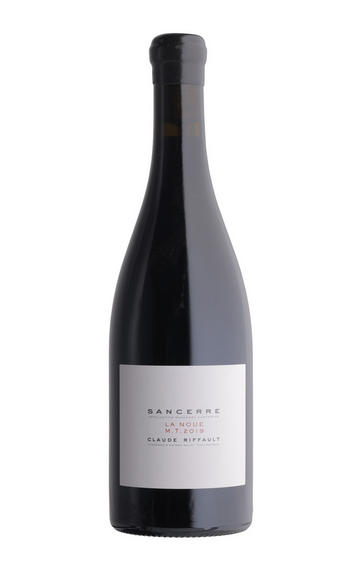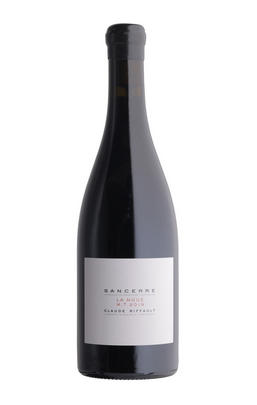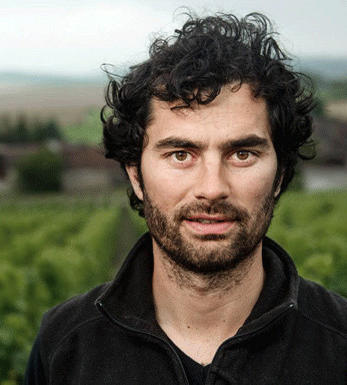
2020 Sancerre Rouge, La Noue, Claude Riffault, Loire

Critics reviews
The 2020 La Noue is a Sancerre Pinot Noir made with whole bunches that identify on the nose with garrigue and wormwood-suffused notes overlaying the violet, raspberry and blueberry fruit. The wine sits comfortably in the mouth, blossoming and expanding with its silky texture.
However, those whole bunches give a chunky structure that combine both a chalky and lightly stemmy character that fades gently, leaving a fruit cake and tea leaf-like fragrance long into the night! While the fruit is upfront, the tannins need time to come around. 14.5% alcohol gives the merest note of warmth but it isn't distracting.
Claude Riffault is a shining star in Sancerre, producing suave, texturally intriguing, seemingly effortless wines. Having joined the family business in 2001 and been handed the keys to the estate in 2015, Stéphane Riffault has implemented changes that have refined the wines, starting with the move to hand harvesting in 2008. In 2013, the family moved its 15 hectares to organics, achieving certification in 2016, which led to biodynamic conversion, starting in 2018 (2021 was the first fully biodynamic harvest).
All the white wines (it does have 2ha of Pinot Noir) are fermented and aged in large wood; malolactic fermentation is always avoided, and even its most extensive production wine – Les Boucauds – spends ten months on lees, rising to 14 months for its single vineyards like Les Chasseignes, Les Denisottes and Les Chailloux, creating richly textured, lightly autolytic expressions.
Drink 2024 - 2037
Rebecca Gibb MW, Vinous.com (December 2022)
About this WINE

Domaine Riffault
Domaine Claude Riffault is a 13.5-hectare estate based in the village of Sury-en-Vaux, around 5 kilometres from Sancerre. One of the most exciting domaines in the Sancerre appellation, it is run by Stéphane and Bénédicte Riffault. All of the vineyards are certified organic and biodynamic.
Stéphane studied in Burgundy, and his brother, Benoît, married into the Sauzet family in Puligny-Montrachet and now makes the wines there. Therefore, It is no surprise that the approach here mirrors that in Burgundy, focusing on identifying and highlighting individual terroirs.
The grapes are hand-harvested and rigorously sorted before crushing and a light settling to retain a significant proportion of lees. This and extensive lees ageing allow Stéphane to produce the textural wines he enjoys. The whites' vinification and ageing occur in concrete tanks and large-format oak – demi-muids and foudres.
The red wines are also among the very best the region has to offer. They are typically made with a significant proportion of whole bunches, bringing a spicy, floral character and mid-palate richness to the wines. Importantly, yields are kept low to obtain a good level of ripeness.
In all colours, this is an excellent address for precise, delineated, and concentrated wines that go against the convention of easy-drinking Sancerre.

Sancerre
Sancerre is a famous white Sauvignon Blanc appellation located on the left bank of the Loire, across from Pouilly-Fumé.
While Pouilly-Fumé's vineyards are tightly clustered and homogeneous, Sancerre's 14 communes (including the great villages of Chavignol, Bué, Verdigny, Amigny and Ménétréol) are widely dispersed, covering nearly 3,000 hectares over vertiginous valleys at up to 350 metres above sea level, and three distinct soil types: silex, a white flint found around Sancerre and Ménétréol in particular, giving perfume and a fine structure; terres blanches, a calcareous clay soil that whitens as it dries (widely distributed), delivering a full, fruity richness; and caillottes, a Portlandian soil brimming with large limestones imparting both power and verve – as found in Sancerre, Chavignol and Bué.
A fourth soil type, griottes, tightly-packed with small limestones, has also been identified – as found near the village of Vosges. Kimmeridgean clay crops up less consistently than in Pouilly-Fumé and since most Sancerre, bar the single-vineyard wines, are a blend of soils the result is a richer, fuller and fleshier Sauvignon Blanc.
As with Pouilly-Fumé, an increasing number of (single-vineyard) wines are being raised in French oak, mostly 500-litre and demi-muids; little surprise in light of naturally higher alcohol levels due to global warming. Sancerre Rouge is also made from Pinot Noir, the quality of which is often compromised by bleeding some of the juice to make rosé – Vincent Pinard is a master nonetheless.
Recommended producers: François Cotat, André Dezat, David Sautereau
Top vineyards include: Les Monts Damnés, La Grande Côte, Le Cul de Beaujeu, Grand (and Petit) Chemarin, Chêne Marchand

Pinot Noir
Pinot Noir is probably the most frustrating, and at times infuriating, wine grape in the world. However when it is successful, it can produce some of the most sublime wines known to man. This thin-skinned grape which grows in small, tight bunches performs well on well-drained, deepish limestone based subsoils as are found on Burgundy's Côte d'Or.
Pinot Noir is more susceptible than other varieties to over cropping - concentration and varietal character disappear rapidly if yields are excessive and yields as little as 25hl/ha are the norm for some climats of the Côte d`Or.
Because of the thinness of the skins, Pinot Noir wines are lighter in colour, body and tannins. However the best wines have grip, complexity and an intensity of fruit seldom found in wine from other grapes. Young Pinot Noir can smell almost sweet, redolent with freshly crushed raspberries, cherries and redcurrants. When mature, the best wines develop a sensuous, silky mouth feel with the fruit flavours deepening and gamey "sous-bois" nuances emerging.
The best examples are still found in Burgundy, although Pinot Noir`s key role in Champagne should not be forgotten. It is grown throughout the world with notable success in the Carneros and Russian River Valley districts of California, and the Martinborough and Central Otago regions of New Zealand.


Buying options
Add to wishlist
Description
It’s a short hop from the Cote d’Or to Sancerre and a hop that Pinot Noir, in the safe hands of Stephane Riffault, has made with ease. Served blind, you’d be hard-pressed to think this is from the Loire, with its Gevrey-esque wild violet notes, but the gorgeous, crunchy raspberry fruit brings you back West.
This is a head-turning Pinot and once to convince the most ardent of Burgundy fans of how Pinot can thrive away from its more celebrated addresses. Utterly delicious; I can’t wait to watch this evolve.
Drink 2024 - 2035
Fergus Stewart, Private Client Manager, Berry Bros. & Rudd (November 2023)
wine at a glance
Delivery and quality guarantee